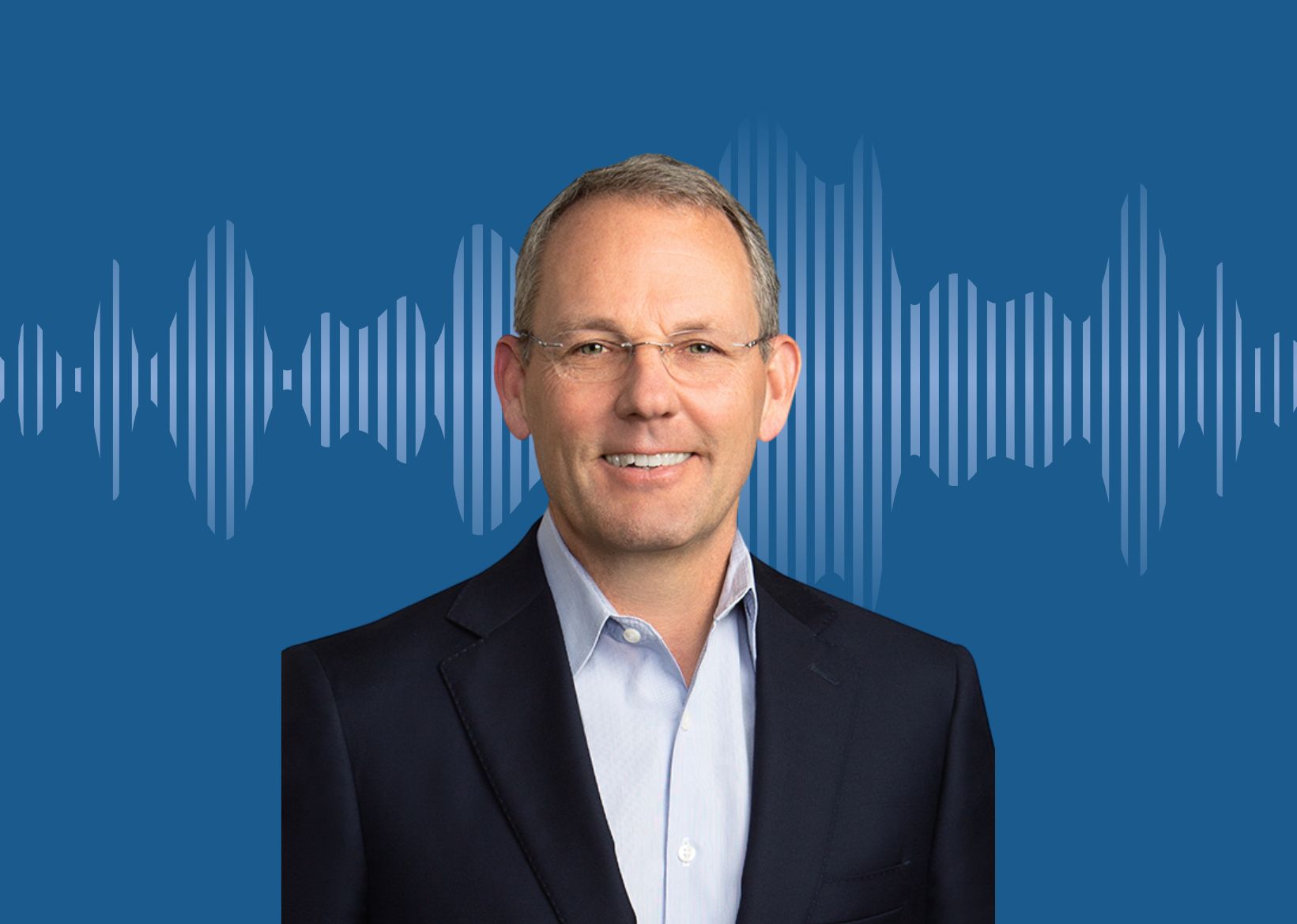CEO & CIO Chris Wallis dissects the Fed’s rate commentary, what the market is pricing in and a look at the second half of the year and into the first half of 2025.
July 31st, 2024
Lightly edited transcript
Dan Hughes: Welcome to the Vaughan Nelson podcast. With me today is CEO and CIO, Chris Wallis. Welcome, Chris.
Chris Wallis: It’s great to be here.
Dan: All right, Chris, here we are. It’s July 31st, we’re recording, and just a few minutes ago the Fed met and decided to keep rates unchanged. However, they did, it seems, finally signal that we’re going to see a rate cut here in September. Typically, a rate cut that’s a signal of weakness for the market. With the Fed cutting in September or certainly looking like it, should investors start to begin positioning defensively?
Chris: What’s interesting, it’s certainly been the case for the last several decades that once the Fed begins to cut, it’s a bearish signal for equity markets. I think it’s an important context in that for the last several decades, the Fed was cutting, not in response to inflation falling, but in response to a weakening economy. As is typical, the indicators that the Fed use are very late cycle and their policy tools have such a lagged effect that when you wait for the sign of weakness in the economy, the sign of a recession, the sign of weak employment conditions, and you start cutting rates, you’re just too late. You’re too far behind the curve.
So it has been the case in the past that a Fed cutting rate would be a bearish signal for equity markets and there’s reasons to believe that while that might be the case this time, I really wouldn’t try to position for it.
The reason I say that is the Fed’s cutting rates now because they went through one of the most aggressive hiking cycles in many decades and inflation is falling. Inflation has legitimately come down and they have room to ease policy.
What they’re talking about doing is a fairly minor adjustment. I quite frankly think they need to cut rates more than what they’re willing to. So they did signal that there’ll be a rate cut in September. Quite frankly, if I were them, I’d cut 100 basis points in September, but they’re probably just going to do 25.
So I don’t necessarily think it’s going to be a signal that the investors need to get bearish. That may come later, depending on how slow they are in cutting rates. But initially, no, I don’t think it’s necessarily a negative signal.
Dan: Then just thinking more about what’s going on with the market, it continues to be pretty volatile between oscillating sector rotations. These seem to be driven mostly by reduced earnings and earning estimates. What do you think the market’s starting to price in here?
Chris: Look, the market’s been very volatile really since the beginning of July and I think the correction in July in the market leadership and then the rally in cyclicals and small caps and banks, and quite frankly, if you look in the smallest market cap, if you look at the Russell 2000 value as an example, the returns were inversely correlated with market cap and profitability, meaning the smaller companies went up more than the larger companies. The unprofitable companies went up more than the most profitable companies, which is really a sign of just repositioning in the market.
So the market got out of balance. It’s trying to find a way to get back in balance. Then it ran into earnings and as earnings have been released, quite frankly as we’ve expected, the market’s got to take down expectations. It’s going to have to bring down EPS estimates for the back half of ’24. I’m sure we’ve mentioned in the past that it was a very back end loaded year as far as EPS growth.
Then when you look at some of the leadership within technology, we’re starting to bring down even some of the growth expectations there. So that’s creating a lot of volatility in the marketplace. I think what the market’s going to start to struggle with, and I don’t think this is going to end anytime soon, I think this is going to be with us through the first half of ’25, is there’s a lot of cycles that are peaking, and there are certain cycles that are just getting started.
Remember, because it was the COVID stimulus that drove this cycle, there’s not the same synchronisation across industries that you would typically see. So industrial activity is picking back up yet consumer activity is falling. Healthcare services is picking back up. Healthcare insurers are running into problems. We’re starting to see some pick up in loan and credit activity, and at the same time, we’re starting to see a maturity in the credit cycle. So there’s just a lot of conflicting signals out there that when you aggregate them, it’s going to look like a lot of sector rotation.
But when you really step back and look at what is at play, I think we’re going to be bringing down estimates for the back half of the year, then bringing down growth estimates for 2025.
For certain companies, it’s not going to matter because the valuations already reflect that and quite frankly, they may actually move higher because they’re oversold. In other areas where multiples are still relatively robust, you’re going to see some sizable multiple compression. So I think it’s going to be a fairly choppy market for the foreseeable future.
Dan: So just building on that a little bit in light of your comments, where do you stand now for near-term economic inflation outlook? I’m talking mostly second half of ’24, maybe a little bit of the front half of ’25.
Chris: Look, the next two CPI prints are going to be fairly benign. Coming into the headline numbers in the two-seven-ish, two-eight-ish area and that will give the Fed the signal and the opportunity to start cutting rates in September and we’re going to see some weakening employment data that’s also going to give them the ability to start cutting rates.
At the same time as we move into Q4, we’re going to see a fairly sizable step down in real GDP growth. So don’t be surprised if we see real GDP growth in the back half of ’24 through the first quarter of ’25 drop about 100 basis points.
At the same time, as we move through Q4 of ’24, CPI, we’re going to get these two softer prints. Then they’re going to start getting a little stickier, and they’re going to start picking up in the first half of ’25.
So we’re going to be in an environment of CPI around two-seven to three, two, three, three, and we’re going to see real growth step down about 100 basis points and remain one and a half to two and a quarter-ish for the next few quarters, which is not terrible and also not exceptional.
So again, that in and of itself is going to continue to generate this chop. Then out of that confluence of any shifts in policy post the election and a confluence of what may play out in energy markets with the geopolitical conflicts, we’re going to see movement in the equity risk premium higher, which will bring markets lower or lower, which will provide some underlying support to equity markets in the face of falling growth expectations.
Dan: All right, very good. Well, thanks Chris. Thanks for coming on. Put a wrap on it there and we’ll see you soon.
Chris: Sounds good.
The views, information, and/or opinions expressed during this podcast are solely those of the individuals involved and do not necessarily represent those of Vaughan Nelson and its employees. Vaughan Nelson does not verify and assumes no responsibility for the accuracy of any of the information contained in the podcast. The primary purpose of the information, opinions, and thoughts presented in this podcast is to educate and inform. This podcast or any podcast in the series does not constitute professional investment advice or services, and any reliance on the information provided is done at your own risk. Past performance is not an indication of future performance. By accessing this podcast, you acknowledge that the entire contents of this podcast are the property of Vaughn Nelson or used by Vaughn Nelson with permission and are protected under US copyright and trademark laws. Securities discussed within this podcast may be held in the Vaughn Nelson strategies.
Also find us on
This information is provided for general information purposes only and does not take into account the investment objectives, financial situation or needs of any person. Investors Mutual Limited (AFSL 229988) is the issuer and responsible entity of the Vaughan Nelson Global Equity SMID Fund and the Vaughan Nelson Global Equity SMID Fund (Quoted Managed Fund) (‘Funds’). Vaughan Nelson Investment Management, L.P. is the investment manager.
This information should not be relied upon in determining whether to invest in the Funds and is not a recommendation to buy, sell or hold any financial product, security or other instrument. In deciding whether to acquire or continue to hold an investment in the Funds, an investor should consider the current Product Disclosure Statement and Target Market Determination for the appropriate class of the Fund, available on the website www.VaughanNelson.com.au or by contacting us on 1300 219 207.
Stay up to date
with Vaughan Nelson
Register to receive regular performance updates and regular insights from the Vaughan Nelson investment team, featured in the Natixis Investment Managers Expert Collective newsletter.
Vaughan Nelson Investment Management marketing in Australia is distributed by Natixis Investment Managers, a related entity. Your subscriber details are being collected on behalf of Vaughan Nelson Investment Management, and Investors Mutual Limited (the RE for Fund) by Natixis Investment Managers Australia. Please refer to our Privacy Policy. Natixis Investment Managers Australia Pty Limited (ABN 60 088 786 289) (AFSL No. 246830) is authorised to provide financial services to wholesale clients and to provide only general financial product advice to retail clients.




